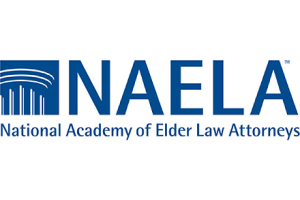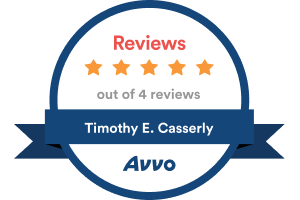Retiring Successfully
HELPING CLIENTS RETIRE SUCCESSFULLY
Timothy E. Casserly, Esq. CFP
and
Michelle I. Casserly, Esq.
Last year the Financial Planning Association conducted a survey of more than 750 financial planning professionals to identify the key challenges that will influence planners in the future. Among the topics surveyed, respondents were asked what issues are of most concern to their clients today. One of the most frequent client concerns was how to plan appropriately for age related change including the death of a spouse, elder care and long term care. As elder law attorneys we are in an ideal position to help address these client concerns and it is likely you already have an existing client base to work with.
Over the course of practicing elder law for the past twenty-five years we have worked with many families tackling the traditional elder law issues of planning for long term care, diminished capacity, protecting an inheritance for loved ones and crisis planning due to illness, incapacity and death. Often this work is done with the adult children being involved. Now, these children, recognizing the benefits of the work that was implemented for their parents, are returning to do their own planning as they approach their retirement. Some of these prospective clients may have worked with a Financial Planner, Investment Advisor or utilized online programs for a rough idea of how to plan for retirement earlier in their working years. A typical pre-retirement plan (i.e. one that is done more than ten years in advance), would start with data gathering to determine net worth, cash flow, savings and investments, then lead to identifying goals for short term (e.g. major expenditures- new home, second home, college education) and for long term (e.g. retire comfortably by a certain age). With this information, a plan to build wealth, reduce debt, insure against catastrophic loss and meet ongoing expenses is designed and implemented. Thereafter, it is monitored and adjusted to minimize taxes and investment risk. Now however, the focus is quite different than the prior planning which was based on assumptions for spending, inflation, savings rates, health and longevity and time horizons. Now, retirement is imminent, so earlier assumptions can be clarified, made more definitive or disregarded entirely. This article will briefly address a number of key differences from the more traditional, prospective retirement planning many people do in their 30s, 40s and 50s so you can structure the conversation and personalize a plan tailored to your clients who are at or very near their retirement. From prior experience, we have identified eleven areas where prior assumptions can be replaced with present circumstances to give us a starting point for discussions with our clients on how best to plan for a successful retirement.
1. Clients probably no longer have minor children, so child support is not a leading consideration. Typically, a major budget item had been support for minor children. By now, the routine expenses for food, clothing, schooling, insurance, housing and transportation have been transferred to the children themselves. This change not only frees up cash flow for actual expenses, but it also removes the need to save for future expenses such as college, weddings and family vacations.
2. Surviving spouse may not be capable of earning. When planning for cash flow and expenses in the event of death or disability, most younger couples plan that the surviving healthy spouse will continue to work or go back to work if their spouse can no longer earn an income. Now, because of age, health, skill sets, experience or the job market, the options for a healthy surviving spouse returning to work may be limited or impractical. Consequently, the family may instead need to rely on savings, pensions and any life insurance policies already in place. Also, with younger couples you typically plan for the event that either spouse may be unable to work. At retirement, you may have a better idea of which spouse is likely to die or become disabled sooner. Therefore, changes to pension payouts, health benefits and insurance payouts must be reviewed to anticipate any new expenses or lost income.
3. Living situation may change. This can be as simple as a move to a new state with a lower tax rate and cost of living or a move necessitated by health reasons to a facility with more expensive living expenses and fees. This is a good place to start the conversation with clients about planning options. According to the National Council on Aging, forty (40%) percent of couples have not discussed where they want to retire. At retirement age the plan is not as straightforward as taking the annual expenses of home ownership and adjusting for inflation to project how it affects cash flow. Now you must consider the tax implications involved in selling or otherwise transferring the house including the differences in capital gains and basis when gifting to a trust or making outright gifts. If aging in place is the desired objective there may be tax deductions for some home improvements to make a home handicap accessible. There may be other strategies to save money/and or protect assets where there is a caretaker child living in the house. Another consideration is how the choice of domicile affects prior planning, taxes, expenses and availability of care.
4. Insurance portfolio should be reviewed to provide for changed circumstances. The risks that clients may have insured against in the past have likely shifted, so changes to insurance plans may be needed. Prior planning may have focused on covering the loss of a spouse, children’s college expenses, larger mortgages or disability. Now, the larger expenses are paid off or reduced and the prior risks are no longer relevant. Also, there may be other savings in place if a catastrophe strikes causing death or disability. Now it may be more important to insure against different risks- long term care, Medigap coverage or liabilities on the second to die.
5. Spending patterns may change. Major purchases and work related expenses such as commuting, meals, equipment and clothing will likely drop. However, there will often be an increase in travel, leisure and health expenses, especially if some of these expenses were covered by an employer in the past. After years of saving, a client’s discretionary spending may increase in order to enjoy retirement. For this client the day has come to enjoy those savings and start spending. Conversely, some clients may have spent years splurging, living on credit, and ignoring saving for the future. These clients may need to restrict their spending, recognizing the finite years of earning power and resources in order to ensure they don’t outlive their money. In either case, this phase of life calls for a review (or maybe even a first time view) at what a fixed income can adequately cover.
6. A vital planning objective is assuring the availability of, and securing a payment mechanism for acute medical care and custodial care for chronic conditions.
We can assist our clients in this area by having them outline an emergency plan for acute medical care that includes names and numbers of preferred doctors, hospitals, pharmacies and payment sources such as Medicare and any other insurance.
For custodial care, explore their preferred options and determine whether these options are viable. Often a person wishes to age in place in their home with family members as caretakers. If the likely family caregivers work full time and/or live out of the area, you may need to advise your client that a “Plan B” should be considered including options other than staying in their home. This discussion should include long term care expenses for all options including community based Medicaid, adult day care and home health aides.
A recent study by Fidelity Investments reports that in 2015 a couple retiring at age 65 could expect to pay $245,000 for out-of-pocket health care costs throughout retirement. A study by Nationwide Retirement Institute released in early December, 2015, reports that only 10% of affluent pre-retirees (those with at least $150,000 annual household income) have discussed their future health care costs with their financial advisor. As elder law attorneys, we are in the perfect position to advise clients on planning for the costs of future medical care and developing strategies that may allow them to remain in their homes.
If skilled care is part of the plan, the same issues that arise with acute care must be discussed – availability and affordability. Discuss whether the budget can handle long term care premiums or the extent to which they can partially ensure this risk. You can also discuss whether it is realistic to plan for Medicaid by gifting funds without affecting the retirement they have in mind.
In any case, urging a client to consider their health care and family’s longevity can help them address and plan for potential health costs and options.
7. In general, public benefits assume an important part in the planning process. (e.g., Social Security, Medicare, Medicaid). After paying into the Social Security system for so many years, there is a tendency to want to elect benefits as soon as possible. This however my not be the best strategy for maximizing such benefits over one’s lifetime. However, for many people this will be a major portion of their retirement income. The Social Security Administration calculated that today’s “medium” earner will have 42% of their income replaced by Social Security. It is important to look at each spouse’s benefits options, other income, desire to work up to or past retirement age, and current health and family longevity before claiming social security for one or both spouses. If there are other sources of income, it might be better to delay taking Social Security benefits to the age of 70 to maximize those benefits over one’s remaining years. There are several other strategies to consider if a spouse has their own benefits, only a spousal benefit, widow benefits or benefits as a divorced spouse. Congress has recently curtailed some of the planning options but we can assist clients in maximizing their overall lifetime payout.
It is also important to consider the extent to which Medicare and Medicaid benefits will play a potential role in paying health and long term care costs, either by necessity (the only affordable option), or by design (through the use of asset protection planning). There may also be a gap in time between loss of employer health coverage and age 65/Medicare eligibility. We can advise a client on how to plan to fill this gap so as to remain insured.
8. Often, planning for receiving a lump sum must be anticipated. It is not unusual to have a lump sum of some type become part of the planning process. This might be due to an inheritance, sale of a home, retirement payout or life insurance benefit. In each case there will be unique tax and cash flow considerations in determining how best to use the money. It might be used to pay down debt, create an income stream, invest, buy into a retirement community or make gifts to family or charities. Some clients may be relying on such a lump sum from any of these sources in order to have a successful retirement and it may not be coming as soon as they would like (or need) it. These realities and expectations will need to be discussed and examined to determine whether such payouts will be timely or viable in each individual circumstance.
9. Investment needs may change. Investment needs may not only change but they may become relevant for the first time. Until retirement, investments may have been handled by a person’s pension plan, their deceased or former spouse or they may not have ever had a lump sum to invest themselves. It is advisable to find an advisor to help identify an acceptable risk tolerance, so an investment portfolio may be designed to meet their spending needs without undue risk. The other aspect of changing needs is that more risk was acceptable during working (accumulation) years because you could work through any periods of market volatility. However, without an income, it might be time to be more conservative in a portfolio to reduce broader fluctuations that you cannot withstand or replace. Alternatively, it is important to not be so conservative so as to ignore a retirement time horizon that may go for thirty- plus years. It may be prudent to leave a percentage of the portfolio in stocks to allow for growth and to compensate for inflation of spending needs.
10. Trusts may become a more important planning tool.
For many pre-retirement clients with or without younger children, coordinating a simple will, beneficiary designations and joint titling will sufficiently cover their estate planning needs. At retirement, there are usually more variables to consider and the idea of estate administration becomes less speculative. As a result trusts become a more important planning tool to carry out a client’s objectives. There are many different situations where trusts can be beneficial including avoidance of probate due to potential will contests, owning real estate in multiple states, outliving your distributees thus making it difficult to obtain waivers of citation, asset management in the event of incapacity or death, asset protection, and tax planning to name a few.
11. Dealing with actual or potential incapacity is a major planning concern.
At retirement age clients may no longer be able to do everything for themselves. They may receive or have received a diagnosis of something that signals the probable onset of mental and/or physical limitations in handling decisions relating to healthcare, finances, transportation, and living conditions. Each of these will have an impact on cash flow and a surrogate decision maker will be needed to continue or alter their financial plan accordingly. In these situations, it is important that the plan is even more fully documented than a conventional plan so others can step in if necessary. Invariably, you have worked with clients who handled all of their financial planning themselves. When a person becomes incapacitated someone in the family now comes to you for help. The problem that arises is that their self-governed plan may have made perfect sense and was suitable to them, but to a third party it seems financially irresponsible or disjointed. With more documentation, the surrogate decision maker can provide continuity with the investments, cash flow and tax strategies of the principal.
Each of these eleven issues are worthy of broader analysis, but raising these topics will help you effectively advise your clients plan for what is a fairly universal overall retirement planning objective: Being able to unite lifetime and post death planning, using income and assets to provide comfortable post retirement lifestyle (including medical and custodial care as needed), whether or not capacity is retained.









